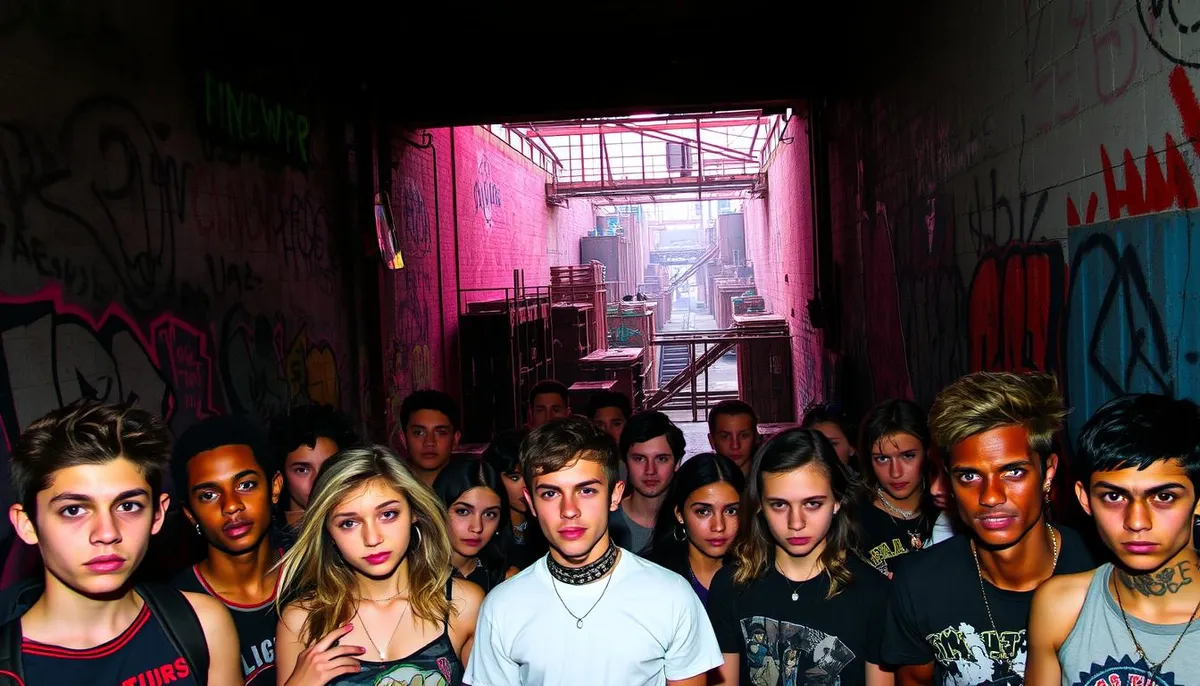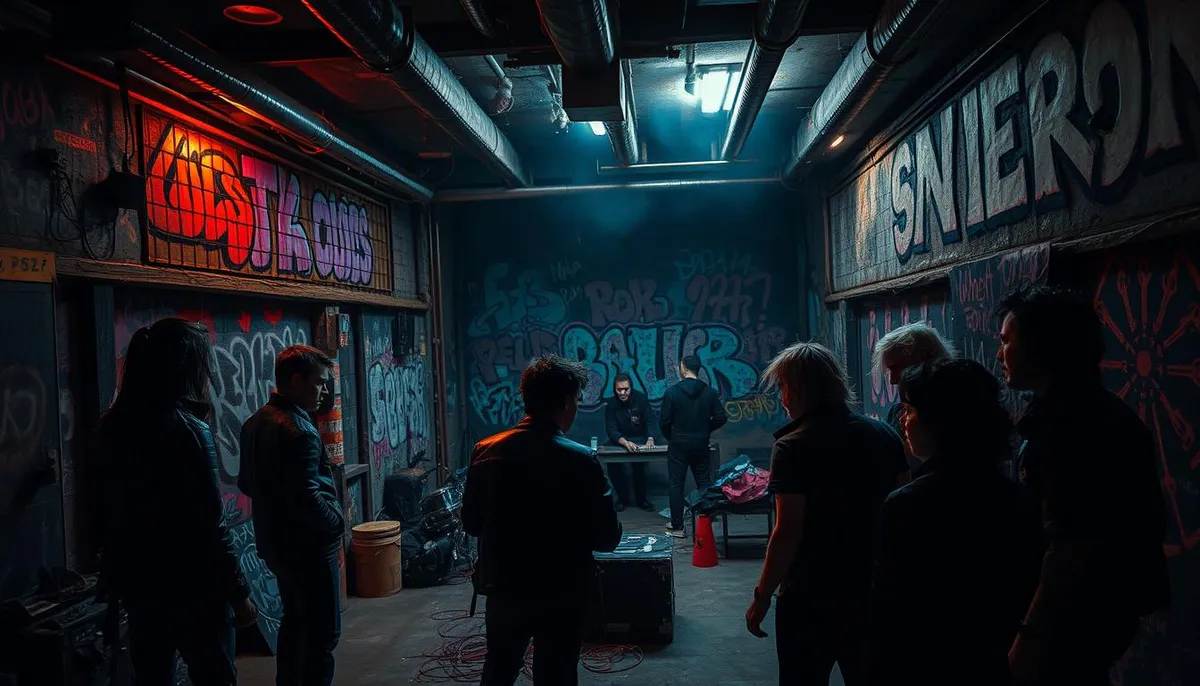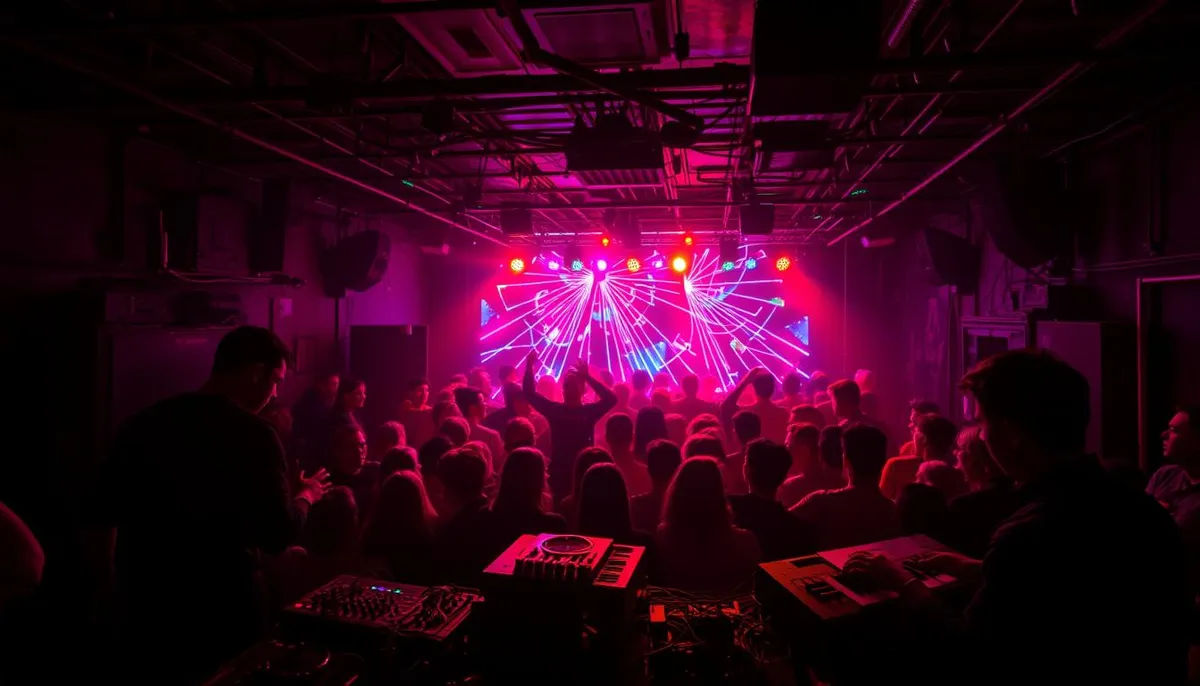The nomadic thought, conceptualized by Gilles Deleuze and Félix Guattari in the 1980s, characterizes the spirit of the alternative movement. This complex phenomenon influences our society.

We will explore the dimensions of this alternative thought and its evolution. Current trends shape this movement in constant evolution.
This article will analyze the impact on mainstream society in the modern world, and how this thought remains relevant.
What is underground culture today?
Today, underground culture represents a diverse movement with multiple facets. It encompasses various artistic, social, and political expressions that challenge established norms.
Alternative culture has been understood as a political movement belonging to the counter-culture, often associated with illegality since the 1970s. It has also been approached through its artistic dimension, considered as the epicenter of the avant-gardes.
The origins and evolution of the movement
Since the 1970s, underground culture has evolved by integrating new forms of artistic expression and pushing the boundaries of creativity. This evolution is marked by constant innovation and includes tips for preparing for a general knowledge multiple choice questionnaire.
Nomadic thought as a philosophical foundation
Nomadic thought, conceptualized by Deleuze and Guattari, constitutes the philosophical foundation of underground culture. This approach values perpetual movement and fluidity, encouraging creativity that escapes fixed categorizations.

Current trends in underground culture
Today, underground culture is characterized by its dynamism and its capacity to innovate. It encompasses various artistic and social expressions that reflect contemporary concerns.
Contemporary artistic expressions
The current underground artistic scene is marked by a diversity of styles, ranging from electronic music to provocative visual installations. Artists often use social media to disseminate their works and mobilize their audience.
The underground in the digital age
The advent of digital technology has transformed underground culture, offering new spaces for creation and dissemination. Alternative venues and independent festivals continue to play a crucial role in the underground ecosystem.
Emerging subcultures in France
France is witnessing the emergence of new subcultures that combine global influences and local specificities. These movements are characterized by their political, ecological, and social engagement, proposing alternative lifestyles and consumption patterns. Additionally, many enthusiasts are looking for ways to enhance their experience, often seeking a promo code for bike equipment to make their purchases more accessible.

| Trend | Characteristic | Example |
|---|---|---|
| Music | Electronic genre | Underground electronic music festival |
| Fashion | Streetwear style | Independent fashion designers |
| Film | Experimental films | Underground film festival |
The impact of underground culture on society
Underground culture has a significant impact on today's society. It influences not only the arts and fashion but also mindsets and behaviors.
This perpetual movement between contestation and the creation of alternatives is at the heart of its influence.
Between contestation and the creation of alternatives
Underground culture is characterized by its ability to contest established norms while proposing innovative alternatives. This dual approach allows for the renewal of spaces for creation and expression.
The influence on mainstream arts and fashion
The influence of underground culture on arts and mainstream fashion is evident. Many artists and designers draw inspiration from trends and ideas emerging from the underground to create works and collections for the general public.
The paradox of commercial appropriation
Underground culture faces a paradox: while being appropriated by institutions and the market, it continues to reinvent itself. This constant struggle between authenticity and appropriation is at the core of its existence.
Conclusion: the future of underground culture
The future of underground culture is shaping up through a diversification of artistic expressions and organizational modes. This evolution is marked by the emergence of new creation spaces that challenge the established order while adapting to contemporary realities.
The nomadic thought will continue to inspire movements that refuse institutionalization and favor fluidity and experimentation. The underground arts, particularly music, film, and visual arts, will continue their fight against cultural standardization by proposing creative alternatives.
Furthermore, underground networks will develop on a global scale while preserving local roots in specific places. The underground fashion will continue to influence mainstream trends while developing new subversive aesthetics. Despite attempts at appropriation by institutions and the market, underground culture will retain its capacity to reinvent itself and propose alternative visions of the world.
RelatedRelated articles


